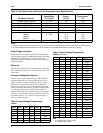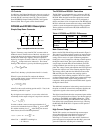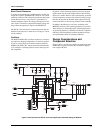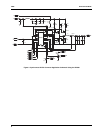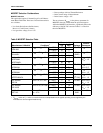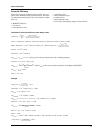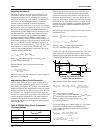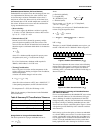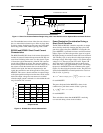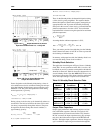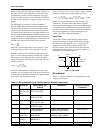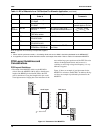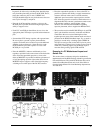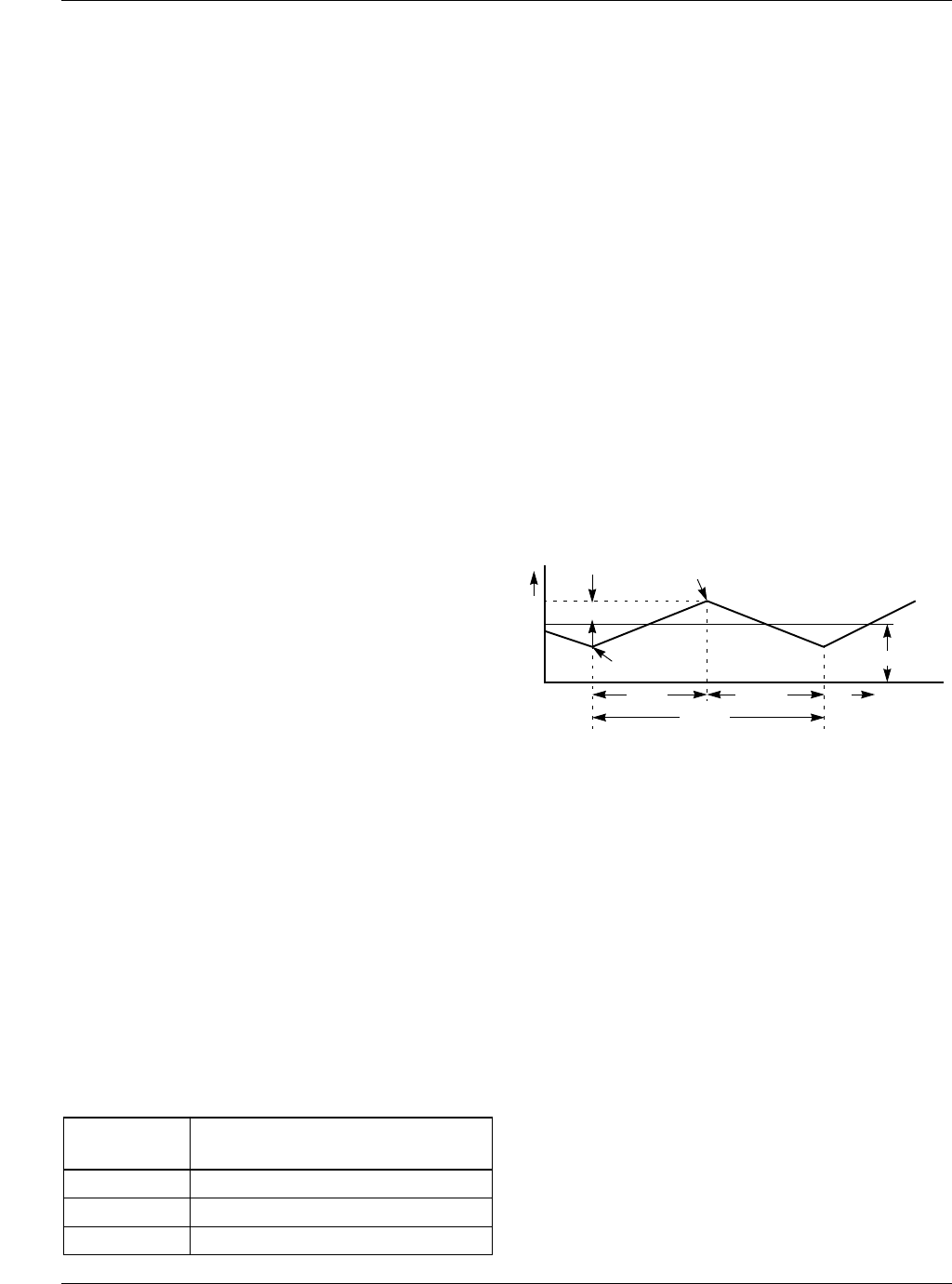
AN50 APPLICATION NOTE
10
Selecting the Inductor
The inductor is one of the most critical components to be
selected for a DC-DC converter application. The critical
parameters are inductance (L), maximum DC current (I
O
),
and DC coil resistance (R
l
). The inductor core material is a
crucial factor in determining the amount of current the
inductor is able to withstand. As with all engineering
designs, tradeoffs exist between various types of core materi-
als. In general, Ferrites are popular due to low cost, low EMI
properties, and high frequency (>500KHz) characteristics.
Molypermalloy powder (MPP) materials exhibit good satu-
ration characteristics, low EMI, and low hysteresis losses,
but tend to be expensive and more effectively utilized at
operating frequencies below 400KHz. Another critical
parameter is the DC winding resistance of the inductor. This
value should typically be reduced as much as possible, as the
power loss in the DC resistance degrades the efficiency of
the converter by the relationship: P
loss
= I
O
2
x R
l
. The value
of the inductor is a function of the oscillator duty cycle
(T
ON
) and the maximum inductor current (I
PK
). I
PK
can be
calculated from the relationship:
Where T
ON
is the maximum duty cycle and V
D
is the
forward voltage of diode DS1.
Then the inductor value can be calculated using the
relationship:
Where V
SW
(R
DS,ON
x I
O
) is the drain-to-source voltage of
M1 when it is switched on.
Implementing Short Circuit Protection
Intel currently requires all power supply manufacturers to
provide continuous protection against short circuit condi-
tions that may damage the CPU. To address this requirement,
Raytheon Electronics has implemented a current sense meth-
odology to limit the power delivered to the load in the event
of overcurrent. The voltage drop created by the output cur-
rent across a sense resistor is presented to one terminal of an
internal comparator with hysterisis. The other comparator
terminal has the threshold voltage, nominally of 120mV.
Table 6 states the limits for the comparator threshold of the
Switching Regulator.
Table 6. RC5050 Short Circuit Comparator
Threshold Voltage
When designing the external current sense circuitry, pay
careful attention to the output limitations during normal
operation and during a fault condition. If the short circuit
protection threshold current is set too low, the DC-DC con-
verter may not be able to continuously deliver the maximum
CPU load current. If the threshold level is too high, the out-
put driver may not be disabled at a safe limit and the result-
ing power dissipation within the MOSFET(s) may rise to
destructive levels.
The following is the design equation used to set the short cir-
cuit threshold limit:
Where I
pk
and I
min
are peak ripple current and
I
load, max
= maximum output load current.
You must also take into account the current (I
pk
-I
min
), or the
ripple current flowing through the inductor under normal
operation. Figure 8 illustrates the inductor current waveform
for the RC5050 DC-DC converter at maximum load.
Figure 8. Typical DC-DC Converter
Inductor Current Waveform
The calculation of this ripple current is as follows:
where:
V
IN
= input voltage to converter,
V
SW
= voltage across switcher MOSFET = I
LOAD
x R
DS,ON
,
V
D
= Forward Voltage of the Schottky diode,
T = the switching period of the converter = 1/f
S
, and
f
S
= switching frequency.
For an input voltage of 5V, output voltage of 3.3V, L equals
1.3µH and a switching frequency of 285KHz (using
C
EXT
= 100pF), the inductor current can be calculated at
approximately 1A:
Short Circuit Comparator
V
threshold
(mV)
Typical 120
Minimum 100
Maximum 140
I
PK
I
MIN
V
IN
V
SW
– V
D
–
L
-----------------------------------------
T
ON
+=
L
V
IN
V
SW
– V
O
–
I
PK
I
MIN
–
-----------------------------------------
T
ON
=
R
SENSE
V
th
I
SC
--------
, where: I
SC
= Output short circuit current=
I
SC
I
inductor
≥ I
Load, max
I
pk
I
min
–( )
2
----------------------------+=
t
I
T=1/f
s
T
ON
T
OFF
I
LOAD, MAX
(I
pk
-I
min
)/2
Ipk
Imin
I
pk
I
min
–( )
2
----------------------------
V
IN
V
SW
– V
OUT
–( )
L
-----------------------------------------------------
V
OUT
V
D
+( )
V
IN
V
SW
– V
D
+( )
-----------------------------------------------
T×=
I
pk
I
min
–( )
2
----------------------------
5.0 14.5 0.037×– 3.3–( )
1.3 10
6–
×
--------------------------------------------------------------
×=
3.3 0.5+( )
5.0 14.5 0.037×– 0.5+
---------------------------------------------------------
1
285 10
3
×
-----------------------
× 2A=



